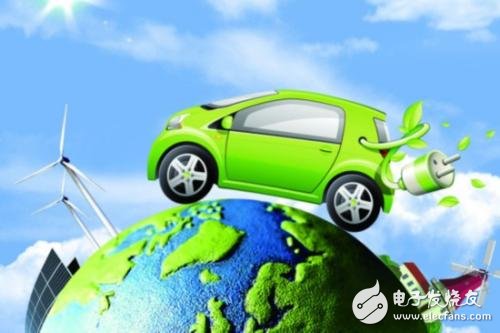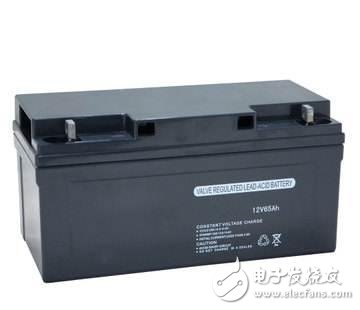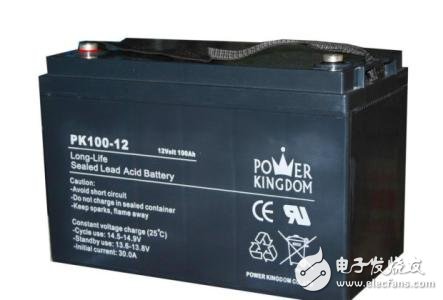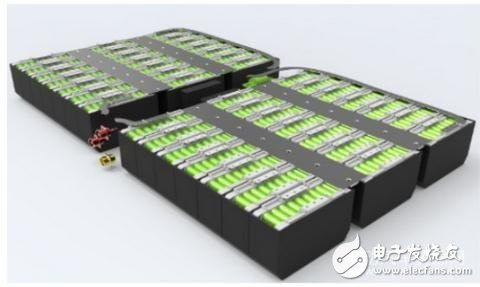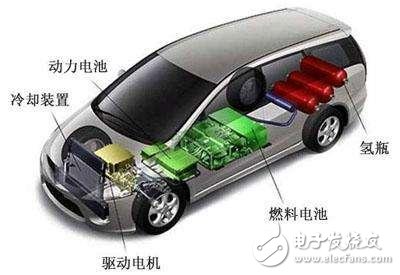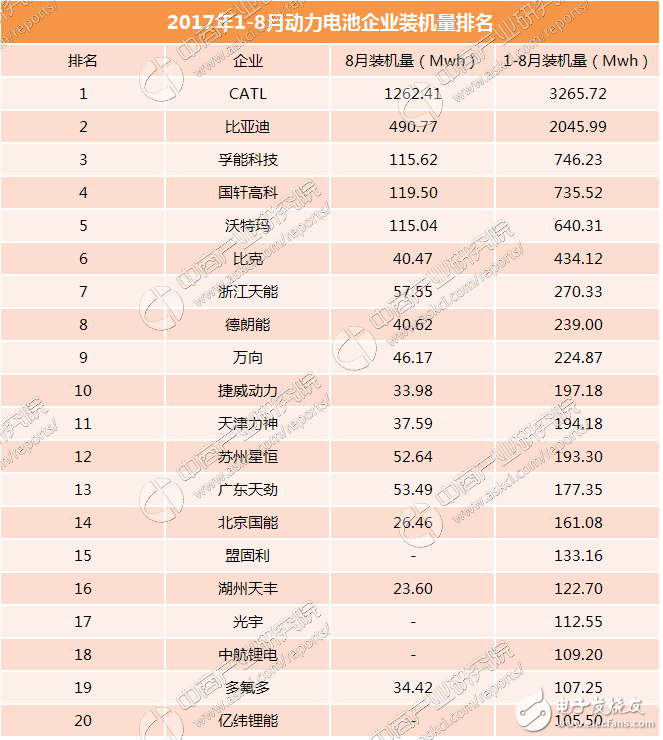New energy car battery types and rankings
New energy vehicles refer to the use of unconventional vehicle fuels as a power source (or the use of conventional vehicle fuels, the use of new vehicle power units), integrated vehicle power control and drive technology, the formation of advanced technology, with New technology, new structure of the car. The new energy battery is the power unit used in new energy vehicles. First, lead acid battery As a relatively mature technology, lead-acid batteries are still the only batteries for electric vehicles that can be mass-produced because of their low cost and high rate discharge. At the Beijing Olympics, there were 20 electric vehicles using lead-acid batteries to provide transportation services for the Olympic Games. However, the specific energy, specific power and energy density of lead-acid batteries are very low, and electric vehicles using this as a power source cannot have good speed and cruising range. Second, nickel-cadmium battery and nickel-hydrogen battery Although the performance is better than that of lead-acid batteries, it contains heavy metals, which can cause environmental pollution after being abandoned. Ni-MH power battery has just entered a mature stage. It is the only battery system in the battery system used in hybrid vehicles that has been verified and commercialized and scaled. The current market share of hybrid batteries is 99% nickel-hydrogen battery, commercial The representative of the chemical is the Toyota Prius. At present, the world's major automotive power battery manufacturers mainly include Japan's PEVE and Sanyo. PEVE occupies 85% of the global Hybrid Ni-MH battery for power vehicles. Currently, the main commercial hybrid vehicles such as Toyota's Prius, Alphard and EsTIma, And Honda's Civic, Insight, etc. all use PEVE's nickel-hydrogen battery pack. In China, Changan Jiexun, Chery A5, FAW Pentium, GM Junyue and other brand cars have been in demonstration operation. They also use nickel-metal hydride batteries, but the batteries are mainly purchased from abroad, and domestic nickel-hydrogen batteries are used in automobiles. Still in the R&D matching phase. Third, lithium battery Traditional lead-acid batteries, nickel-cadmium batteries, and nickel-hydrogen batteries are relatively mature in their own technology, but they are used as power batteries in automobiles. At present, more and more car manufacturers choose to use lithium batteries as the power battery for new energy vehicles. Because lithium-ion power battery has the following advantages: high working voltage (three times that of nickel-cadmium battery hydrogen-nickel battery); large specific energy (up to 165WH/kg, which is three times that of hydrogen-nickel battery); small size; light weight Long cycle life; low self-discharge rate; no memory effect; no pollution. Many well-known automakers are currently developing power lithium battery vehicles such as Ford, Chrysler, Toyota, Mitsubishi, Nissan, Hyundai, Courreges, and Ventury. Domestic automakers such as BYD, Geely, Chery, Lifan and ZTE have also installed power lithium batteries in their hybrid and pure electric vehicles. The bottleneck that currently hinders the development of power lithium-ion batteries is: safety performance and management systems for automotive power batteries. In terms of safety performance, lithium-ion battery has high energy density, high operating temperature, harsh working environment, and people-oriented safety concept. Therefore, users have very high requirements for battery safety. In the management system of the automobile power battery, since the working voltage of the automobile power battery is 12V or 24V, and the operating voltage of the single power lithium ion battery is 3.7V, it is necessary to increase the voltage by connecting a plurality of batteries in series, but it is difficult to implement the battery. Fully uniform charge and discharge, thus causing a single battery in a series of battery packs to be charged and discharged unbalanced, the battery will be undercharged and over-discharged, and this situation will lead to a sharp deterioration of battery performance, and ultimately As a result, the entire battery can not work properly, or even scrapped, which greatly affects the service life and reliability of the battery. Fourth, lithium iron phosphate battery Lithium iron phosphate battery is also a kind of lithium battery, which has less than half the energy of lithium cobalt oxide battery, but its safety is high, the number of cycles can reach 2000 times, the discharge is stable, and the price is cheap, which becomes a new choice for vehicle power. BYD's "iron battery", the industry believes that it is more likely to be a lithium iron phosphate battery. Five, fuel cell Briefly, a fuel cell is a power generation device that directly converts chemical energy present in a fuel and an oxidant into electrical energy. Fuel and air are fed into the fuel cell separately, and the electricity is wonderfully produced. It looks like a positive and negative electrode and electrolyte, like a battery, but in essence it can't "storage electricity" but a "power plant." The most promising for automobiles is the proton exchange membrane fuel cell. Its working principle is: sending hydrogen to the negative electrode, through the action of the catalyst (platinum), two electrons in the hydrogen atom are separated. Under the attraction of the positive electrode, the two electrons generate electricity through an external circuit, and the electrons lose electrons. Ions (protons) can pass through the proton exchange membrane (ie, the solid electrolyte), recombining with the oxygen atoms and electrons into water at the positive electrode. Since oxygen can be obtained from the air, as long as hydrogen is continuously supplied to the negative electrode and water (steam) is taken away in time, the fuel cell can continuously supply electric energy. Because the fuel cell directly converts the chemical energy of the fuel into electrical energy, without passing through the combustion process, it is not limited by the Carnot cycle. At present, the fuel-electric energy conversion efficiency of a fuel cell system is 45% to 60%, while the efficiency of thermal power generation and nuclear power is about 30% to 40%. According to the large database data of the China Business Research Institute, the production and sales volume of domestic new energy vehicles in August was 72,000 and 68,000, respectively, up 67.3% and 76.3% year-on-year; the production and sales volume of new energy vehicles in January-August were 34.6 respectively. Ten thousand vehicles and 302,000 vehicles increased by 33.5% and 30.2% respectively. The production and sales volume of new energy vehicles both increased, and the upper and lower industrial chains were all developed. Among them, the power battery, which is an important part of new energy vehicles, has also developed rapidly. According to statistics, in August 2017, the installed capacity of domestic new energy vehicle lithium batteries was 2924.8Mwh; the cumulative installed capacity from January to August was 8653.7Mwh. In the domestic new energy vehicle market in August, the sales of pure electric vehicles accounted for more than 80% of the overall new energy vehicle market. At present, domestic new energy vehicles are mainly concentrated in new energy vehicles, new energy buses, new energy logistics vehicles and other fields. The installed capacity of power batteries from January to August 2017 is as follows. According to statistics, in August, CATL power battery installed capacity ranked first, reaching 1262.41Mwh, and the only company with an installed capacity of over 1000Mwh. In terms of accumulation, the number of enterprises with the largest installed capacity of power batteries from January to August is still CATL, and the cumulative installed capacity is 3265.7Mwh, accounting for 28.2% of the market. In the development of new energy vehicle batteries, nickel-metal hydride battery technology is the most mature, and will continue to be the mainstream of new energy vehicles in the next three years. After that, nickel-hydrogen battery technology will be combined with lithium iron phosphate and hydrogen fuel batteries, and will gradually become five years later. Replaced by lithium batteries and fuel cells. 64V Battery Pack ,Lithium Battery Box,Lithium Power Pack,Jackery Battery Pack Zhejiang Casnovo Materials Co., Ltd. , https://www.casnovonewenergy.com